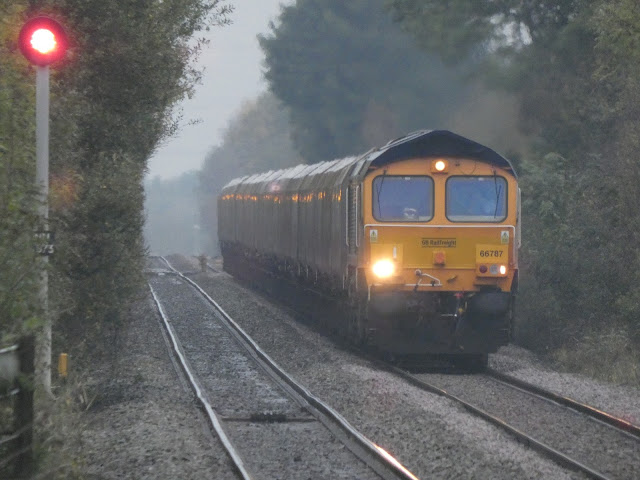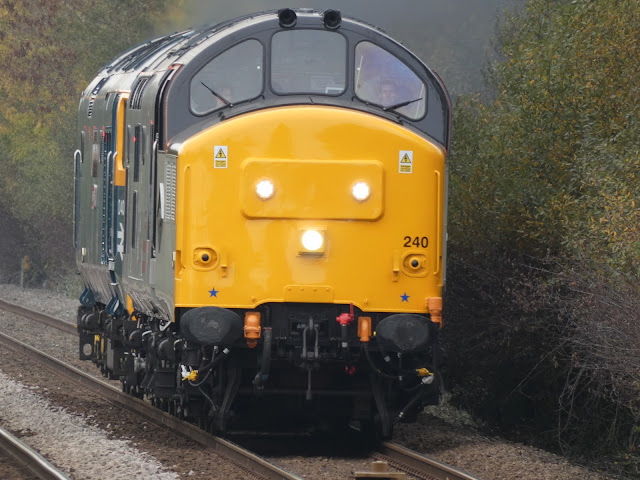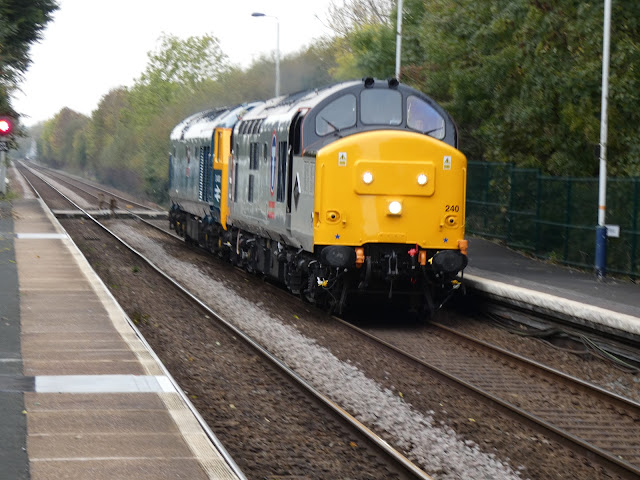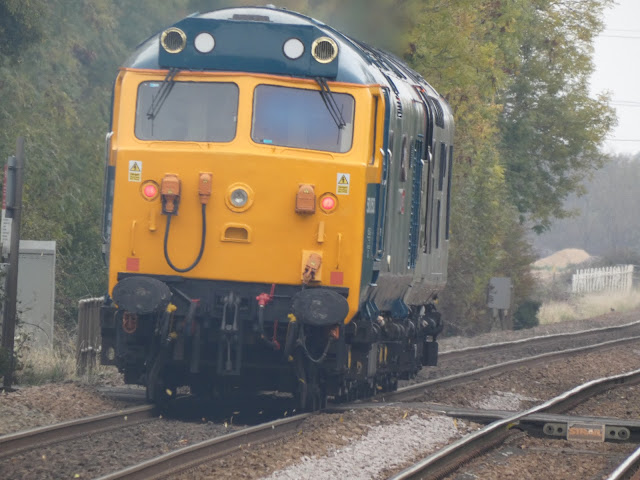Cards on the table - these were number one. I expect I’d
have thought differently if I’d been brought up east of the Pennines, but these
were our favourite engines. They have fine lines and balanced dimensions. They
also combine power with grace and have a real presence about them. Further
character is added by the unique slant of the windshields - always a test for
budding railway artists, depending on the angle.
I saw my last Coronation, No. 46245 City of London, late one
Sunday afternoon in Edge Hill sheds. I think it was in 1962. My friend, Andy,
had clocked her there earlier in the day and kindly spread the word, knowing
she was the last one that I needed to complete the set. My Dad accompanied me
by train and bus and in fading light to find her cold, unattended [there
appeared to be nobody there, that I can remember] and under cover inside the shed,
where I cabbed her. I no doubt slept well that night.
John Dyer photographed several members of the class, including
No. 46230 Duchess of Buccleuch at Glasgow Central in 1960, No. 46231 Duchess of
Atholl at Carlisle in 1960, No. 46243 City of Lancaster at Preston in 1964, No.
46247 City of Liverpool at Oxenholme in 1960, No. 46254 City of Stoke-on-Trent
at Chester in 1962 and two views of No. 46255 City of Hereford at Preston in
1964.
































